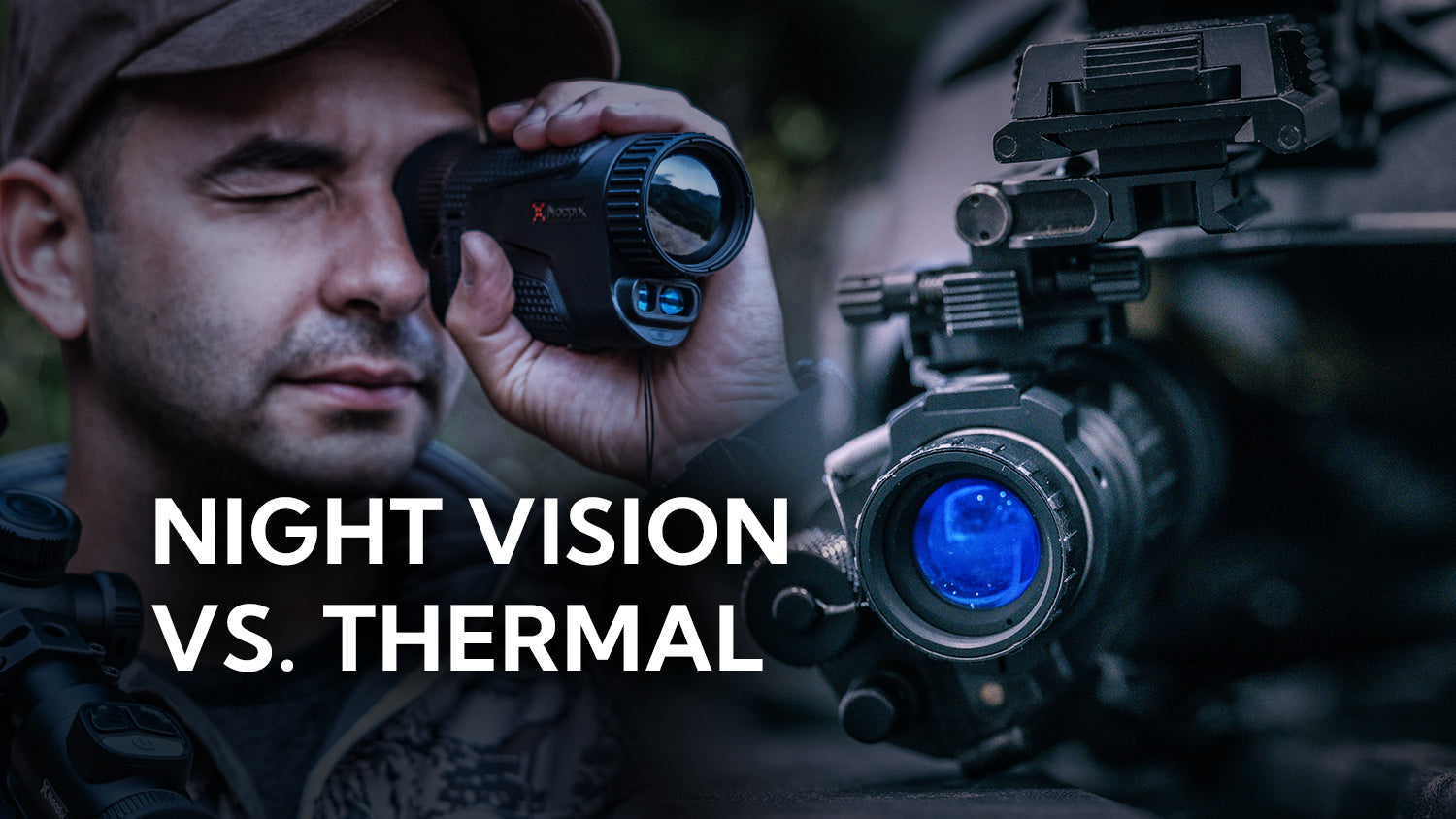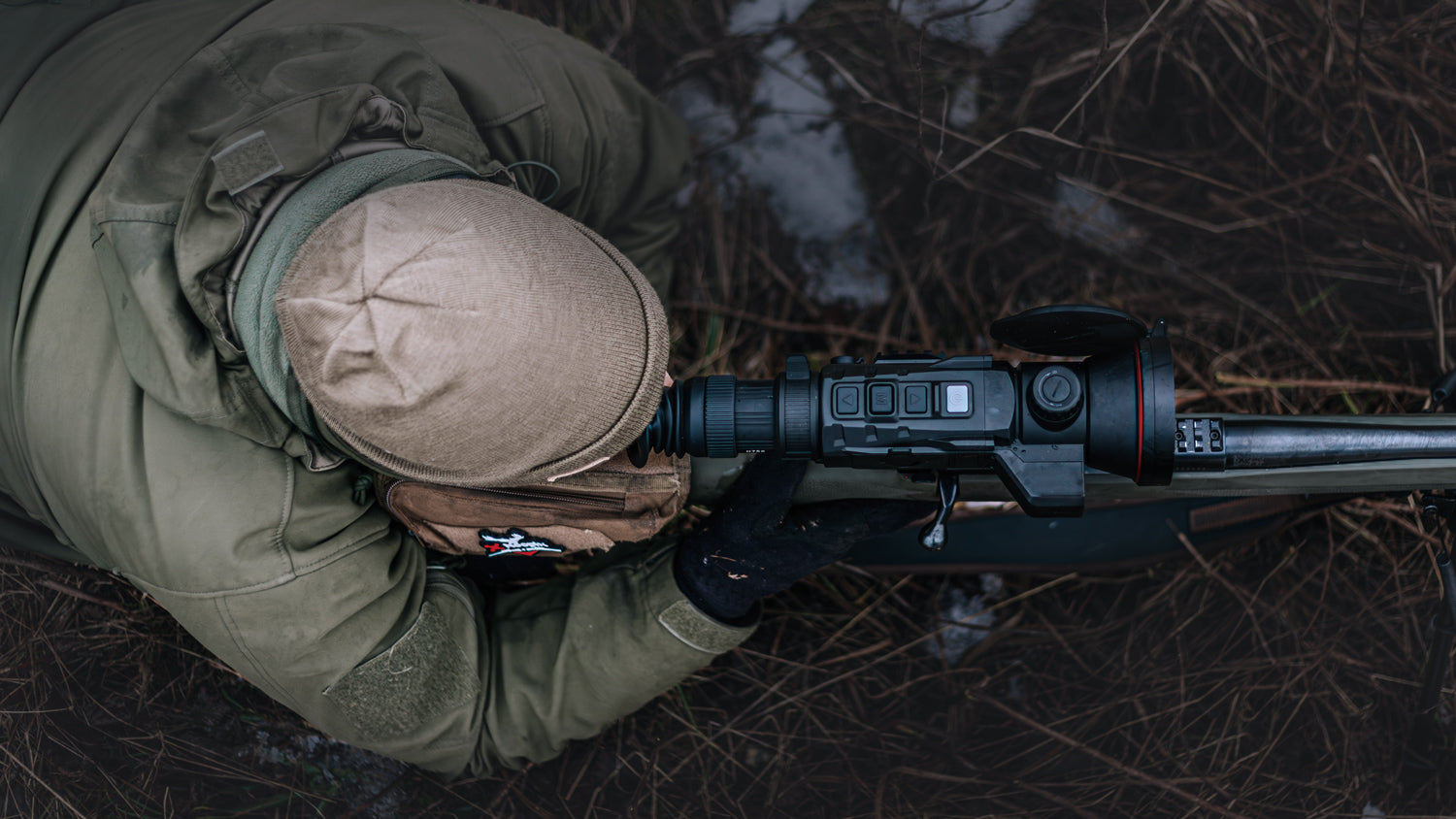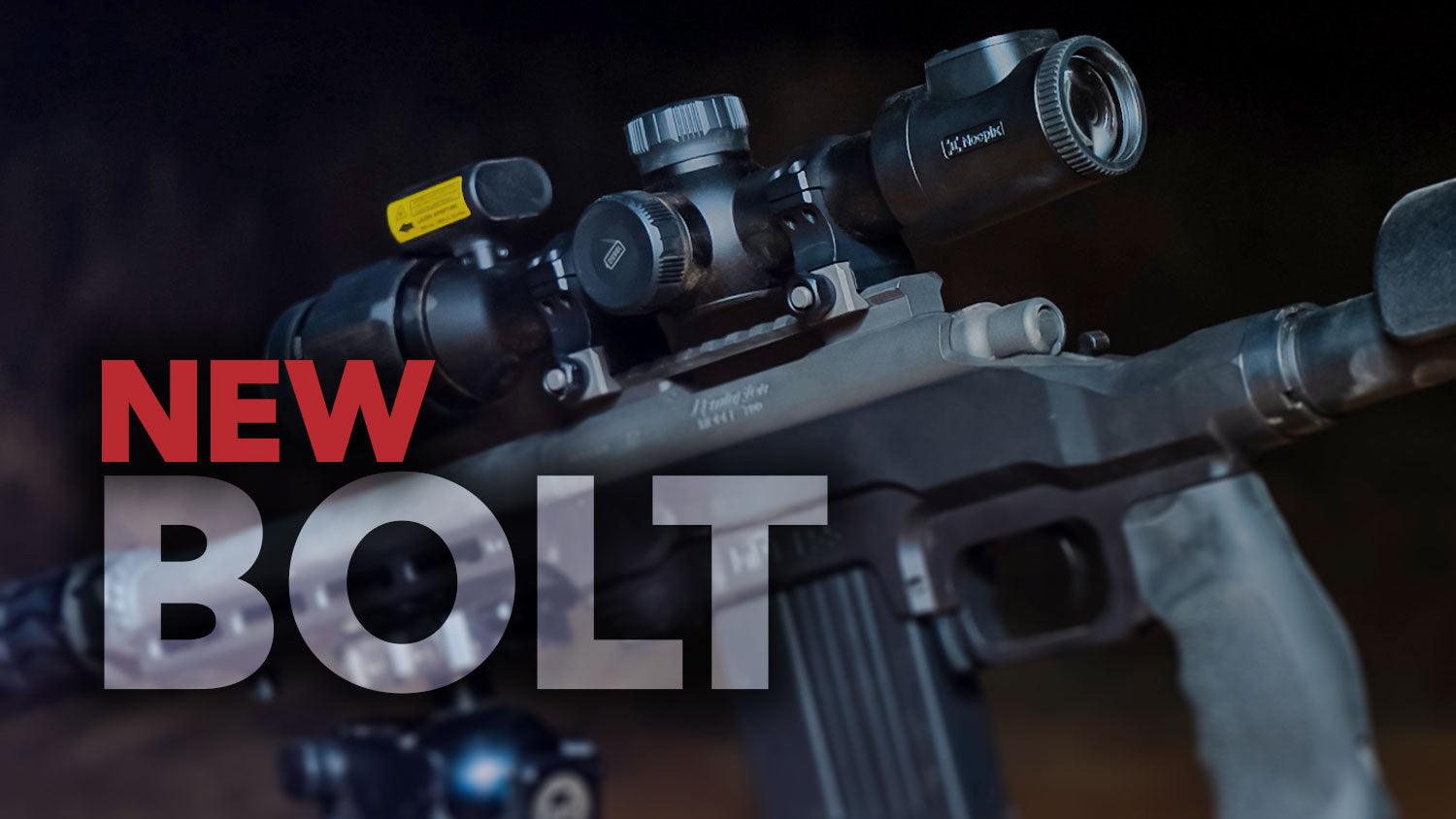In the pitch black of night, our eyes are nearly useless. But that’s exactly when nocturnal animals like hogs and coyotes are on the move—and when serious hunters gear up to take them down. That’s why night vision and thermal optics have become essential tools in the field. Still, not all night-time technologies are created equal.
In this article, we’ll break down the three major imaging systems used for night hunting—analog image intensification, digital night vision, and thermal imaging—explaining how they work, where they shine, and which is best for locating warm-blooded game animals in the real world.
Analog Night Vision (Image Intensification Tubes)
When people hear "night vision," this is usually what they imagine: glowing green imagery from military footage or movies. Analog night vision is based on image intensification tubes (I² tubes) that have been perfected over decades. The classic PVS-14 monocular is the most well-known example—rugged, versatile, and widely used by military and civilian users alike.

How It Works:
An image intensifier tube operates by converting low levels of ambient light—like moonlight or starlight—into a visible image. Here's a simplified breakdown of the process:
- Photons (light particles) enter through the objective lens.
- These photons strike a photocathode, which emits electrons.
- The electrons are accelerated and multiplied through a microchannel plate (MCP) a fine mesh of millions of tiny channels that dramatically increase the electron count.
- The intensified electron stream hits a phosphor screen, creating a visible image.
The result is that even a sliver of moonlight gets amplified into a usable image. That’s what gives analog night vision its characteristic high-contrast, monochromatic green hue (or blueish white, in the case of white phosphor tubes).
Digital Night Vision (CMOS-Based Image Sensors)
Digital night vision is a newer, more accessible form of night imaging. Instead of intensifying light using a vacuum tube, digital systems use a CMOS sensor—the same kind used in your phone or DSLR camera.
These sensors are modified to capture near-infrared light, and optimized for high gain in low-light environments. Most digital NV systems also rely heavily on IR illuminators, which project a beam of invisible infrared light to “light up” the area—basically a flashlight that only the optic can see.
How It Works:
- Light (including near-IR) enters the lens and hits the CMOS sensor.
- The sensor digitally amplifies the image, displaying it on an onboard screen.
- Often, an infrared LED or laser illuminator is used to enhance visibility.
While technically still a form of image intensification, digital night vision is far more limited than its analog counterpart when it comes to light sensitivity and dynamic range.
Thermal Imaging (Infrared Heat Detection)
Thermal optics don’t see light at all—they see heat. Every object above absolute zero emits infrared radiation (IR), and thermal sensors are designed to detect that radiation and convert it into a visible image.
This is the core strength of thermal imaging: it doesn’t matter how dark it is. Even in total darkness, a hog’s body heat stands out like a beacon.
Thermal Optics
At the heart of every thermal optic is a microbolometer—an uncooled sensor array that detects longwave infrared radiation (LWIR) in the 7-14 micrometer range. While other night vision technologies work by amplifying light, thermal works entirely differently; thermal optics don't require any ambient light. By looking at a lower frequency spectrum, thermal optics detect heat energy, and digitally map it into as a visual image. While thermal optics are typically used for spotting warm objects, it is important to not that they can see far more. Every object and every material has a thermal signature, characterized by immersivity (heat output) and reflectivity (an objects ability to absorb vs reflect heat energy).
How It Works:
- Infrared radiation emitted by objects hits the microbolometer’s pixels.
- Each pixel changes electrical resistance based on the temperature of what it’s seeing.
- These resistance changes are read out electronically and rendered into an image, via a processing algorithm and a color palette (e.g. white-hot, black-hot, red-hot).
Nocpix thermal optics—like the ACE series weapon sights, Quest binoculars, and Lumi or Slim handheld scanners—use advanced microbolometers paired with fast-refresh displays and high-sensitivity image processing to deliver sharp thermal imagery.

Refresh Rates and Image Smoothness
One often-overlooked factor in evaluating optics is frame rate, or how smoothly the image updates as you move or track animals.
- Analog I² systems (like the PVS-14) offer continuous real-time motion—there’s no digital lag.
- Digital NV has improved, but often tops out at 30 fps, with noticeable motion blur or delay.
- Thermal systems have evolved from 9 Hz (early models) to 60 Hz or more, offering smooth tracking. All Nocpix optics operate in the 50–60 Hz range, delivering buttery-smooth imagery without sacrificing battery life.
Conclusion: Choose the Right Tool for the Job
One, technology isn't necessarily better than another but these different technologies absolutely have different advantages and disadvantages. Each technology has a place:
- If you're navigating on foot or from a vehicle and want to maintain stealth, analog NV like a PVS-14 still has value.
- If you're on a budget and don’t mind using a strong IR light, digital NV can get the job done for short-range work.
- If you want to locate and engage warm-blooded game in the dark, thermal is unmatched.

When the Sun Comes Up
We're focused on night vision systems, but what happens during they daylight? How to these compare to the human eye?

- Image intensifier tubes are easily damaged when overwhelmed by bright light. The are essentially amplifiers - they amplify any light that enters the system, including bright sunlight, which can burn the phosphor screen or photon tube. Protection system like auto-gating can help, but the fact remains: Analog night vision has no advantage in daylight and can be damaged.
- Because CMOS digital night vision system are essentially just high-gain digital cameras with IR filters removed, many of these systems will work in daylight, but likely require a filter or cap to help prevent the sensor from being overwhelmed by too much IR, UV, and visible light. These systems may work, but it doesn't mean the image will look great. Most shooters will prefer switching over to glass optics during daylight. Using a digital night vision system during the day probably falls into the "it can work... if you must" category.
- While thermal imagining shows its best advantages ad night, the system is agnostic to ambient light. On cold days, thermal optics can still be very advantageous to locate heat sources. Thermal optics can also be damaged by pointing them towards the sun. This is not a daylight vs night issue, as much as an issue of thermal imagery. Focusing the intense heat of the sun on a sensor designed to detect fractions of a degree of temperature difference can burn it out or leave streaks and spots on the sensor.
At Nocpix, every optic we build—from the compact Slim, to the versatile ACE series, to the powerful Quest binoculars—is designed to give you the edge at night. Backed by a 5-year warranty and a 5-day service guarantee, our mission is simple: deliver premium thermal performance with no excuses.
Explore our lineup at nocpixusa.com and see what’s out there—even when the lights go out.



Leave a comment
All comments are moderated before being published.
This site is protected by hCaptcha and the hCaptcha Privacy Policy and Terms of Service apply.